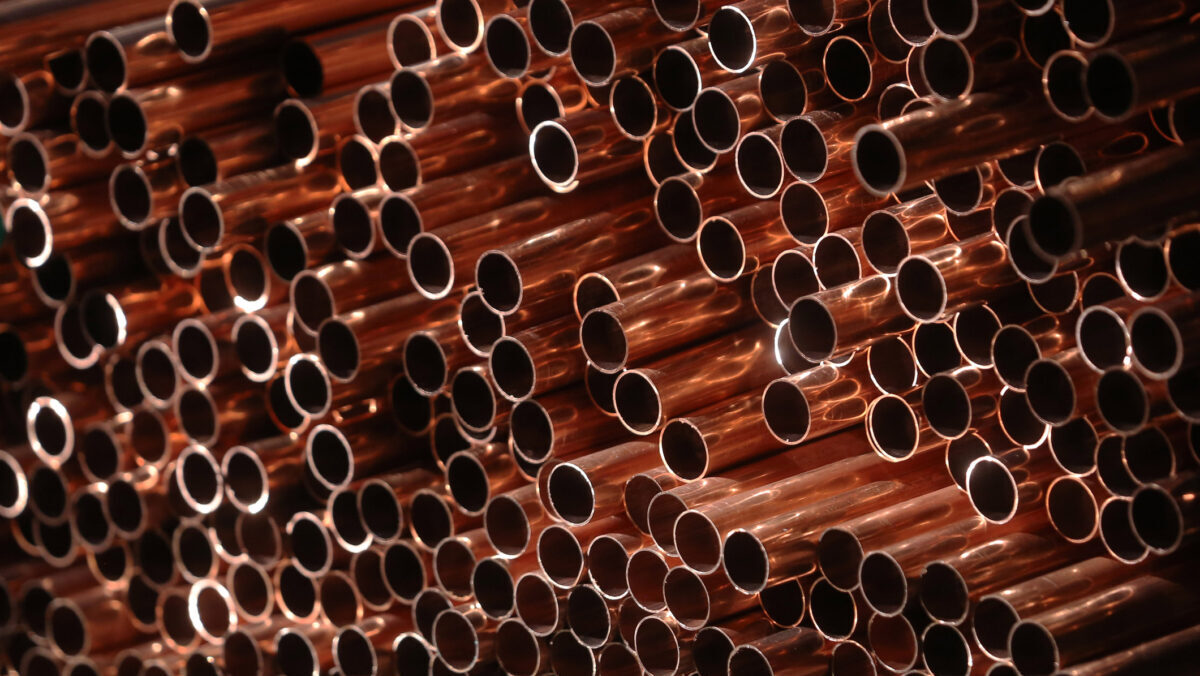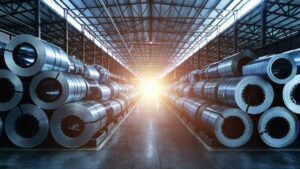Ground Breakers: Sandfire’s Motheo copper expansion is full steam ahead; coal miners unload on royalties

Pic: Oliver Bunic/Bloomberg via Getty Images
- Copper miner Sandfire inches forward on Botswana expansion plans with open pit contract
- New South Wales to boost coffers with raised coal royalty
- Miners huff and puff in response to changes, but won’t blow the house down
Sandfire Resources’ (ASX:SFR) bid to truly fill the void left behind on the ASX after BHP’s (ASX:BHP) $9.6 billion consumption of OZ Minerals is taking shape after the ASX’s largest standalone copper producer extended Perenti’s (ASX:PRN) deal to mine its Motheo copper miner in Botswana.
Sandfire has already announced plans that would see the company expand the new operation in the Kalahari copper belt from an initial 35,000tpa of copper output to 55,000tpa by 2025.
In its recent financial results, SFR reported that it had hit an annualised throughout rate of 2.8Mtpa and max copper recovery of 96% through the first 50 days of FY24, achieving commercial production.
Sandfire reported a US$53.6 million loss for FY23 on 132,000t of copper equivalent production, though much of the 99,000t reported from its flagship MATSA complex in Spain consists of zinc, silver and lead co-products.
SFR expects to produce 97,000t of copper and 88,000t of zinc in FY24, 39,000t of that red metal from Motheo along with 1.2Moz of its 3.8Moz of silver.
The Perenti deal is thus. The big Aussie contractor which has operated in Africa for decades will take on a 73-month, US$235m ($360m) contract to expand its open pit mining at Motheo, where it will open the A4 pit alongside the initial T3 open pit.
Located 8km west of T3, A4 is expected to begin its pre-strip in October.
“We are excited about the opportunity to expand our partnership with Sandfire Resources. Motheo is a long-life asset in the Kalahari Copper belt, and
the expansion of our role here is in keeping with our strategy of disciplined growth within top-tier mining jurisdictions with high quality partners,” Perenti MD Mark Norwell said.
“Sandfire is now one of our largest clients and over the term of the combined contracts, the T3 and A4 open pits are expected to generate total revenue of over A$1.1 billion, delivering strong returns for Perenti and its shareholders.”
Motheo is one of two major operations in the Kalahari Copper Belt along with the private equity owned 60,000tpa Khoemacau mine.
That is currently on the block, and while South32 (ASX:S32) and Sandfire had been rumoured bidders earlier in the process, Reuters reported this week that a host of South African miners had moved ahead.
Sandfire Resources (ASX:SFR) and Perenti (ASX:PRN) share prices today
Minerals Week ends with a bang as coal miners face royalty hit
Shares in New South Wales coal miners Whitehaven (ASX:WHC), New Hope (ASX:NHC) and Yancoal (ASX:YAL) are on the downward slope this morning as investors really get to digest the second major coal royalty hike from an East Coast Government in less than 18 months.
It comes off the back of Minerals Week, admittedly a federal event, where miners of that ilk gathered to swoon Canberra’s elite about the central role the industry plays in political donations … er sorry, we mean the economy.
Last year Queensland sparked a firestorm that still rages after issuing what miners in that state called the heaviest royalty regime in the world, including a top tier of 40% on coal sales once prices hit $300/t.
BHP (ASX:BHP) still won’t commit to capex at its BMA mines, the largest met coal export operations in the country.
Now New South Wales has, after over a year of mumblings from in and around the industry, levied an additional 2.6% on the state’s (largely thermal) coal producers.
That means open cut ops will now return 10.8% of their sales to Sydney, up from 8.2% previously.
Underground miners will pay 9.8% and miners extracting the black stuff more than 400m underground will have 8.8% skimmed, up from 6.2% previously.
The change is expected to net $2.7b over four years from 2024 to 2028 and will see the end of a reservation rule which sequestered 5% of output from NSW coal miners for local users. It is the first royalty change since 2009 and comes after export prices briefly hit US$450/t last year after Russia’s invasion of Ukraine.
“This is a fair outcome for the people of NSW. The old system is out of date. The market has moved on. That’s why we are modernising the state’s coal royalties,” NSW Treasurer Daniel Mookhey said.
“The new scheme will make sure the people of NSW share in the wealth their resources create.
“I want to thank all of the mining companies, the power companies, and our key trading partners for their extensive engagement with the NSW Government ahead of the forthcoming budget.”
Miners respond
It all pales in comparison to the Queensland situation (which many state treasurers would jealously note churned out the largest state surplus in history), but still cooked up some pretty angsty responses from local miners, who are also on the warpath over the Albanese Federal Government’s IR changes.
Glencore said it was “very disappointed” in the decision to “significantly increase coal royalties in New South Wales”, but supported its decision to scrap controversial domestic reservation and price cap rules.
“Last year, Glencore’s coal business alone contributed $8.1 billion to the NSW economy and work for 6,320 employees and contractors,” the mining giant said.
“While Glencore is against the increase in coal royalties, we do acknowledge the consultative approach adopted by the Minns Government with the coal industry to arrive at an outcome.
“We support the NSW Government’s decision not to extend the coal price cap and coal reservation measures in NSW, this was bad public policy from start to finish which did not achieve its stated objective of reducing power prices.
“The Minns Government now needs to provide much needed policy clarity for the treatment of future coal mine investment and approvals as part of delivering on its coal royalty expectations.”
Whitehaven took a similar tone, saying it added to inflationary pressures in the sector.
“Today’s decision will unquestionably add to inflationary pressures impacting our sector and adds to a range of unhelpful policy interventions in the mining and energy sector that undermine confidence in our future,” Whitehaven said.
“In this context, it is all the more important for governments to look harder at ways to improve productivity and make it easier to invest.
“This is essential to secure jobs and investment through an energy transition that will take decades, not years, and to underpin security of energy supply, both at home and for our key trading partners overseas.
“While the cost impact of this royalty change is not insignificant, the increase represents a more measured adjustment in contrast to other jurisdictions and we acknowledge the NSW Government’s constructive engagement with industry and other stakeholders throughout this process so far.”
Front month futures for Newcastle thermal coal are paying US$163/t, while premium hard coking coal for steelmaking is going for US$273/t, having lifted on Chinese stimulus hopes in recent weeks alongside iron ore prices.
Coal miners share prices today:

UNLOCK INSIGHTS
Discover the untold stories of emerging ASX stocks.
Daily news and expert analysis, it's free to subscribe.
By proceeding, you confirm you understand that we handle personal information in accordance with our Privacy Policy.








